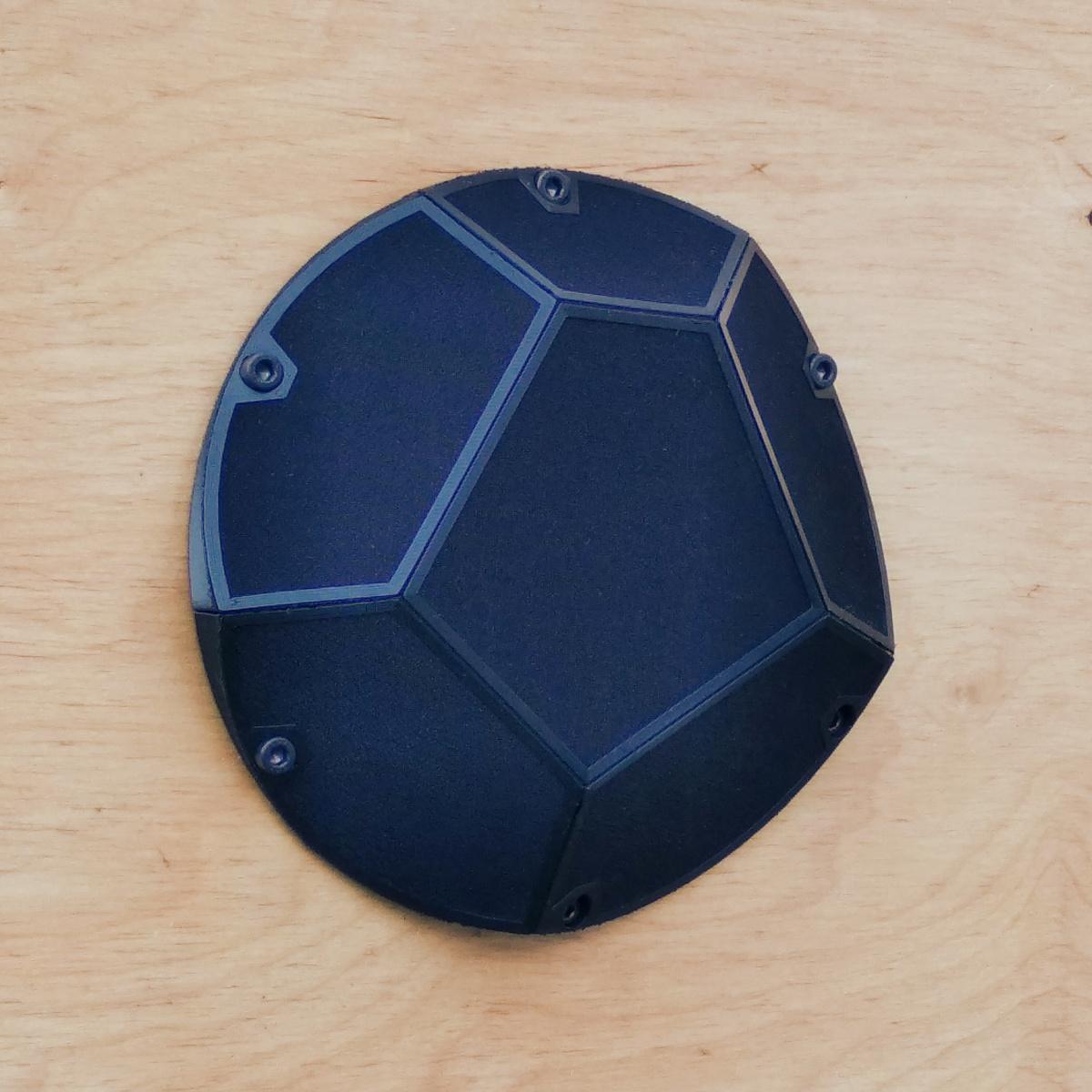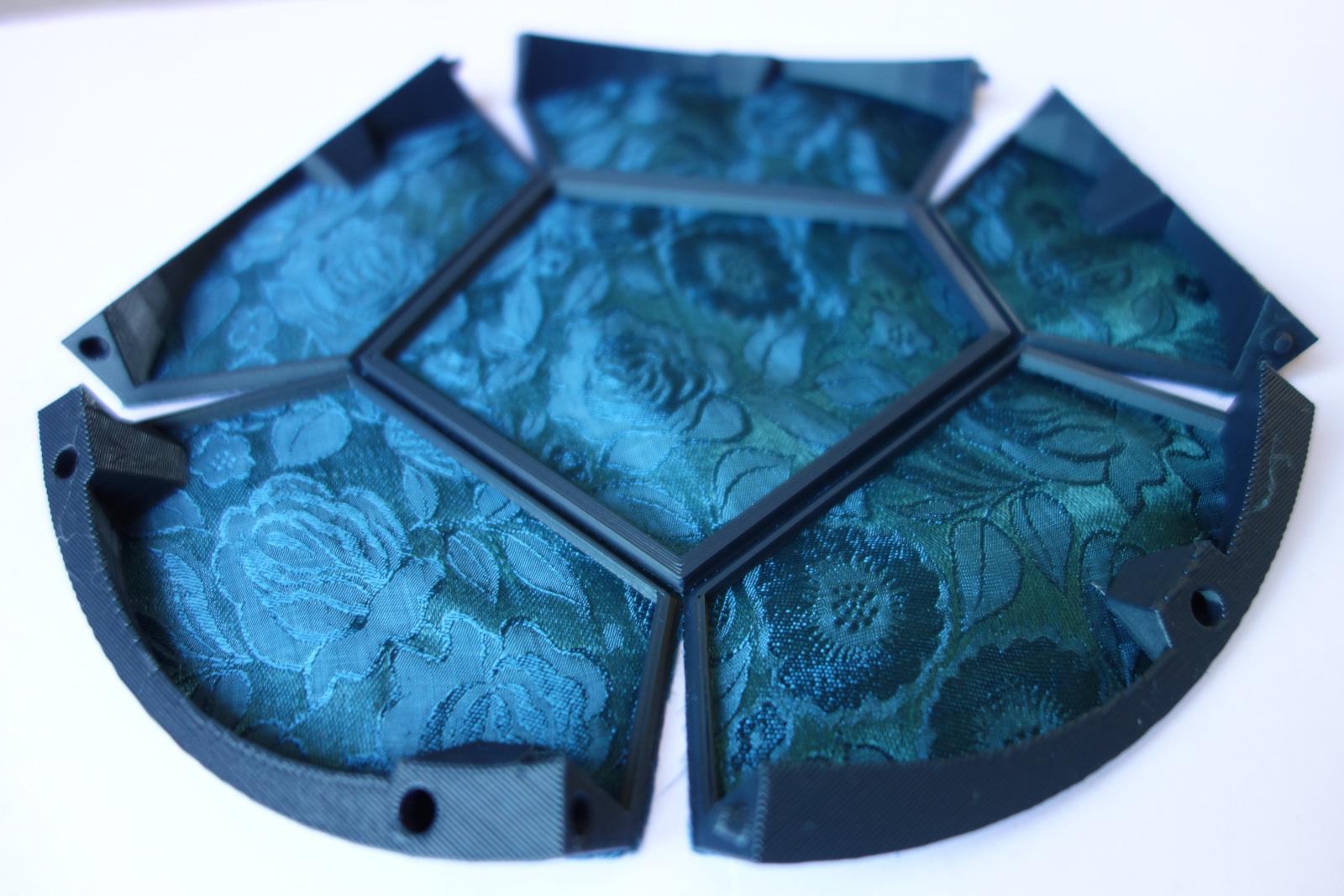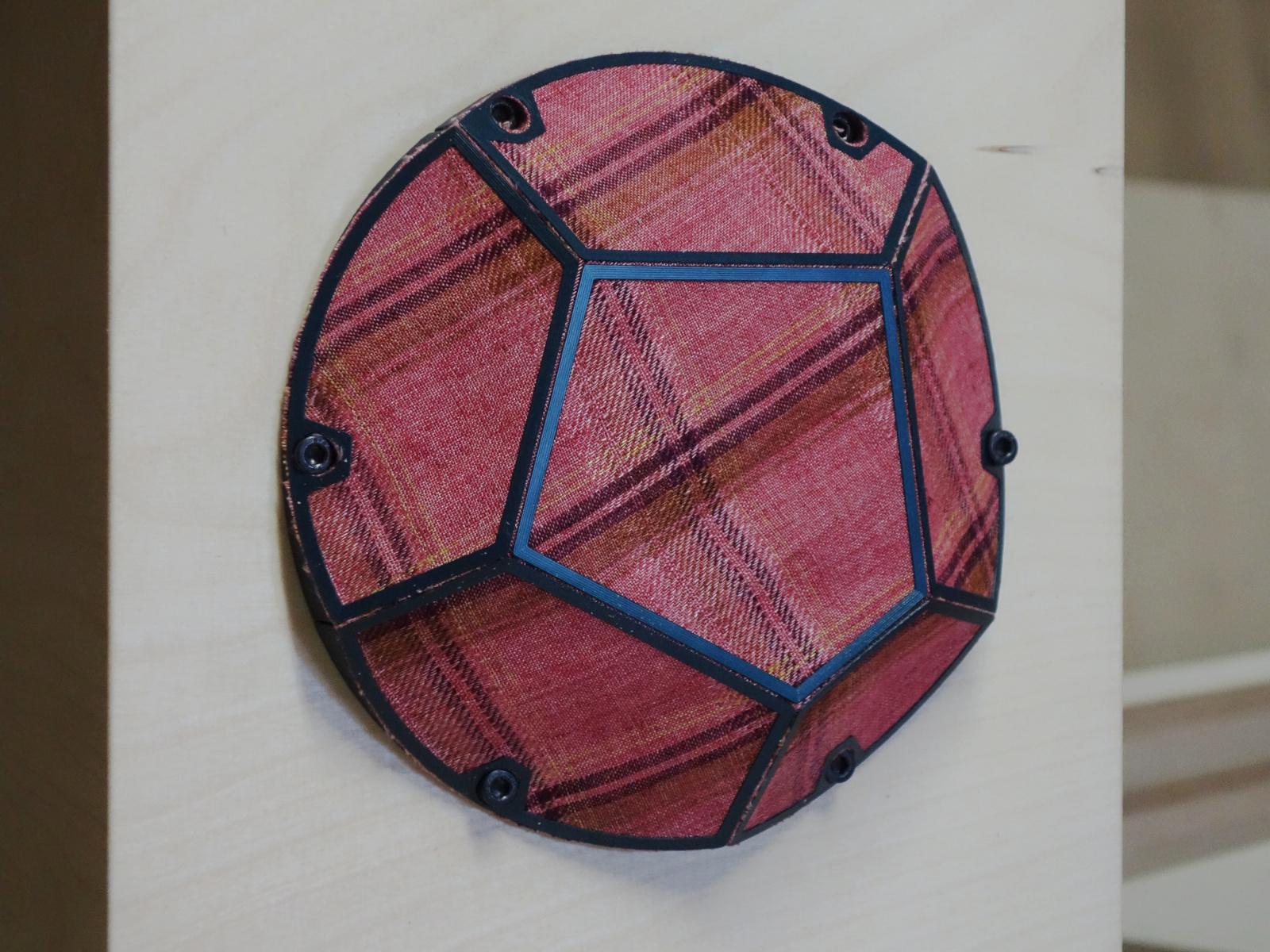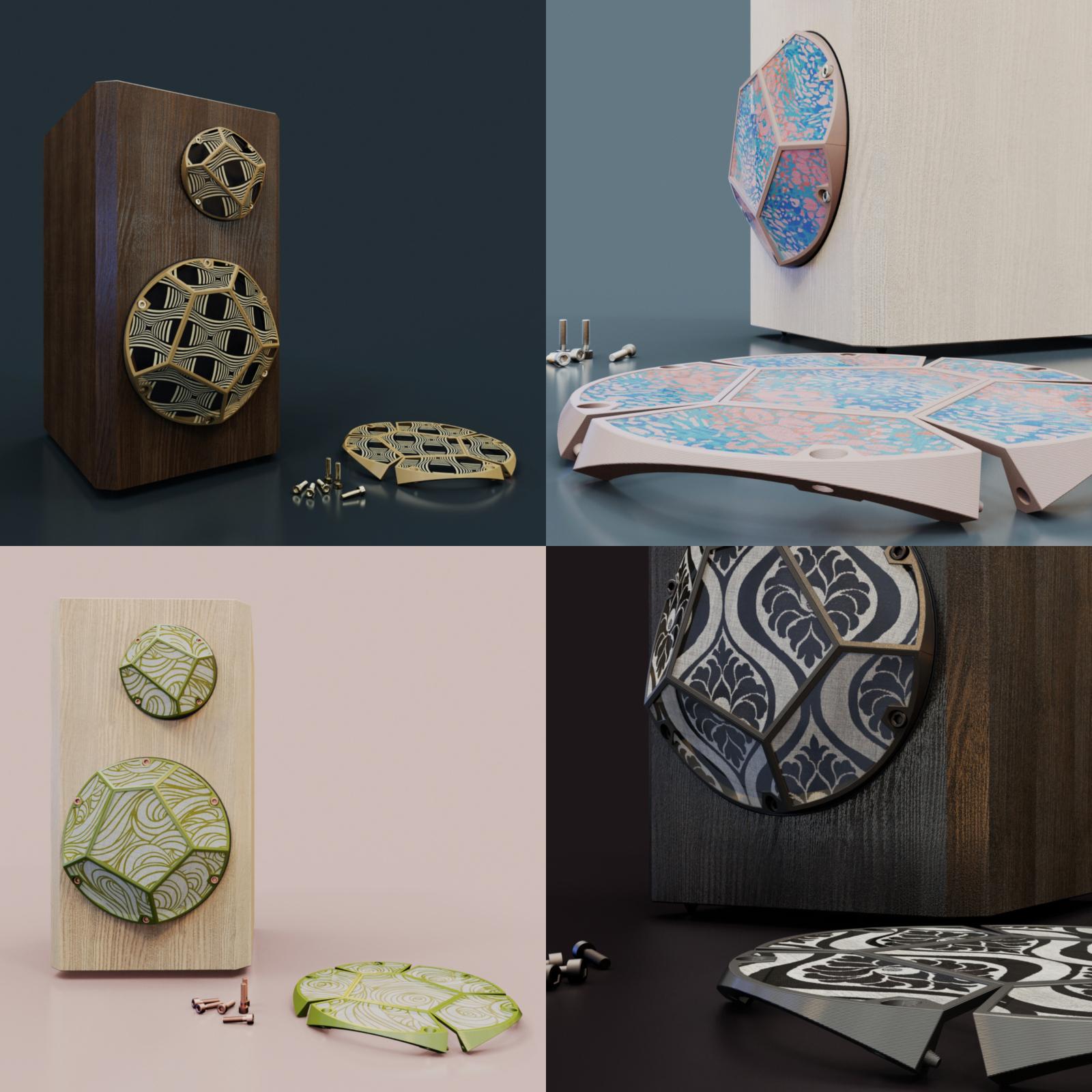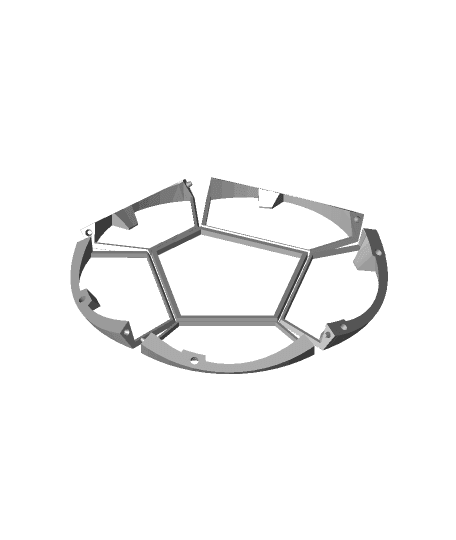Fold in place Speaker cover for the #3DPNSpeakerCover contest
More images and print here : https://twitter.com/AtelDsign/status/1377733453773430791 https://twitter.com/AtelDsign/status/1376330260405452803
To be printed with a layer of fabric embedded at Z=0.5mm
My print settings and instructions :
- Layer height : 0.3mm
- Perimeters : 3
- Infill : 20%
- No need for supports
- Insert a pause at Z=0.5mm (and lift the print head to Z=~120mm)
- Slow down the first layer over the fabric. I went for 20mm/s
An extrusion width over 0.5/0.6mm may break the outermost perimeter in some places.
Use an "open" fabric so that it is as acoustically transparent as possible. If you can breath easily through the fabric it should be ok (although I know nothing about acoustics :). I could print successfully on specialized speaker cover fabric, but also on more "normal" thin fabrics. Extensible fabrics give a better result as you can stretch them when you lay them down and they wont release like plain fabrics tend to do. I managed to print on tights, which is promising because there are so many colors and patterns available.
How to insert and make the fabric bond to the plastic : -Add a pause to the print at 0.5mm height and make it lift the print head (120-150mm at least) -Lay down the fabric stretching it a little bit if it is extensible. I made it hold in place on the print bed with magnets. -Iron over the fabric so that the plastic underneath starts to melt and bond. -Resume the print
Once finished printing you have to cut away the excess fabric. For natural materials (linen, cotton...) I used a sharp and long cutter blade. For synthetic fabrics, what I found out to be the easiest and cleaner way was to cut it away by melting it with a very pointy soldering bit.
Voilà !
